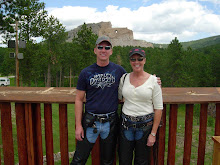Even though I'm working on Follow Me! right now, I'm always circling around Pulse of Battle (Ancient and Medieval ruleset). I thought I'd toss some units on the table and see how it looked.
Keep in mind that this isn't any "real" army - just some Macedonians, Romans, Gauls tossed out in a sort of representative deployment to see if I like the look of the units as composing an army.
Looks pretty good...nice sense of mass.
Each 3 x 3 inch stand is a unit. I'm still not sure if I want to do single stand units or 4 stand units. I'm intrigued by what James Roach (Olicanalad) is experimenting with for his Italian Wars collection. Single stand units offer some advantages - fewer figures required to give a sence of mass, ease of movement, diorama effect, speed of moves during play. But - you have to mark disorder and losses on the stand or behind/next to the stand. Multiple stands allows removing a stand and replacing with a loss marker, jumbling the stands for disorder. I'm wondering if multiple base units might better represent the look and feel of a messy battlefield?
So - having seen a single stand per unit "army" - any preferences/observations/comments about single vs. multiple stand units?
Subscribe to:
Post Comments (Atom)







Hi Brent
ReplyDeleteGood to see POB still in your thoughts :-)
Re basing my own personal pref is to use multiple stands per unit but this is mainly due to my armies being based for DBMM/FOG and no desire to re-base !!
My 15mm kit all on 40mm wide stands (pretty much the standard in UK) so something like Foot of 4-6 stands 2-3 wide and Mounted 2-3 stands in single rank with maybe Pikes or similar deep formations having 1 or 2 additional ranks or extra base depth like those in your pics ?
Cheers
Gary
Nice figures!
ReplyDeleteIf you're not going to allow units to form into different formations then you probably don't need multiple stands per unit. The best thing about multiple stands is you can show if the unit is in line, column, etc.
ReplyDeleteWe use casualty markers that we can rotate to show stand losses and individual figure markers to show disorder. One for out of command and two for disorder.
Very nice photos.
ReplyDeleteI'm thinking of allowing formations, but not in a way to gain combat modifiers - rather to cover space in the battleline. Units fought as unit type, and wouldn't magically get "better" at melee because they were deeper. But - in case of need, units could be spread or compacted to fit the area required. Generals would lengthen their line when outnumbered by doing this. So - typical fighting formation is 4 stands wide by 1 deep; can be compacted to 2x2 if you want more in an area (for multiple unit combat vs. 1 unit, for denser area available for deployment....)
ReplyDeleteBrent
Hi Brent,
ReplyDeleteConcur with Gary's comments........my ancients are 28mm based for FOG so would prefer a basing scheme for POB that could accommodate the existing bases.
Regards
Peter
Hi Brent,
ReplyDeleteI think in ancient and medieval wargaming formations are not so important as in later periods. Armies and troops formations was adopted before the battle and I think changing formation in the field was very rare; exception could be romans, may be, but i still think single unit single base is still the more correct form of rappresentation.
So I can subjest you to leave the maximum of flexibility in basing. An example could be the Impetus basing system, I had been in the Lorenzo play testing team, with a single base/unit formed of 4 FoG/DBX base (2 in front). Players can decide if use single based units, with less figures and diorama effect, or use bases for different system joyned together.
You could also left player using different scale minatures have different bases, for example I based my 6mm for Impetus in single units/bases of 6x3 cm.
Regards,
Sandro
Florence
Italy
I've elected to write the rules for 4 stand units to fit into the existing mold of Field of Battle, but players can base as they wish. Standard formations will be either 4 wide or 2 up/2 back, and won't provide any combat or movement effect/modifiers. The only reason to expand or contract frontage is just that - to expand or contract unit frontages to cover the available ground space in an effort to best fit the tactical situation you are seeing.
ReplyDeleteI think this could be a very flexible and correct soluction Brent. The characteristic I most like in FoB system is to be a real toolbox.
ReplyDeleteSandro